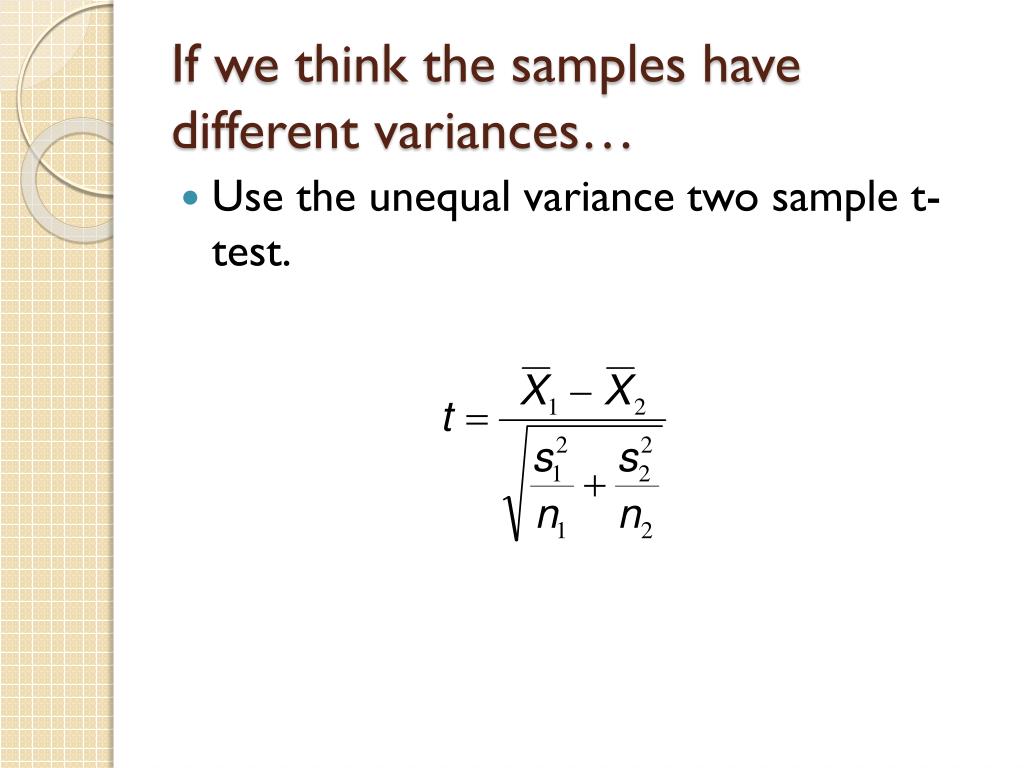

Note however that t tests are reasonably robust to violations of normality (although watch out for the influence of outliers).Įqual variance. If these assumptions are violated we can no longer be sure that the test statistic follows a t distribution, in which case p-values may be inaccurate. Parametric (and non-parametric) tests have a number of assumptions. T-tests are parametric tests, which implies we can specify a probability distribution for the population of the variable from which samples were taken. If you want to conduct a one-tailed test you must add an argument to the function specifying alternative = "greater" or alternative = "less". Note the default t-test argument for the alternative hypothesis is a two-tailed test. The argument var.equal = TRUE specifies that we are assuming equal variances. t.test(pH ~ River_name, data = River_pH, var.equal = TRUE) The t-test is run with the t.test function, with the arguments specifying the response variable (pH) to the left of the ~, the predictor variable (River_name) to the right of the ~, and the data frame to be used.

River_pH <- read.csv(file = "River_pH.csv", header = TRUE) Ten replicate pH measures were taken from each river.ĭownload the sample data set, River_pH.csv, and import into R. Consider the simple example where you wanted to compare the pH of two rivers. You can then use a formula statement, y ~ x, to specify the response and predictor variables rather than the code above. More commonly, we would use a data frame with the response and predictor variables as separate columns. Where my_sample1 and my_sample2 are vectors containing the measurements from each sample. For an independent samples t-test assuming equal variances, we would use: t.test(x <- my_sample1, y = my_sample2, var.equal = TRUE) Note that a t test is a special case of a linear model with a single continuous response variable and a single categorical predictor variable that has two levels.Īn independent samples t-test can be run with the same t.test function as used for one sample or paired t-tests. The null hypothesis is that the population means from which the two samples are taken are equal \.


For example, consider the simple case of whether a sample of pH measurements from one river differs from a sample of pH measurements from a second river. It is used for comparing whether the means of two samples are statistically different from each other (e.g., control vs. treatment, site A vs site B etc). One Continuous and One Categorical VariableĪn independent samples t-test aka a two sample t-test is one of the most commonly used statistical tests.


 0 kommentar(er)
0 kommentar(er)
